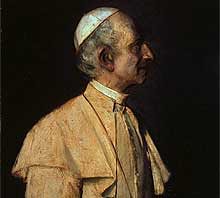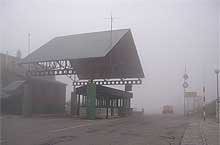It's Matthew Fritz's History Lessons for Junior Generals. Mr. Fritz, a junior-high-school teacher, has produced a dozen or so fun and playable military-strategy games for that age. Playable with inexpensive and widely-available plastic miniatures, or with the paper soldiers made from templates Mr. Fritz kindly provides on his website, the scenarios involve conflicts from Biblical times until the present. They are accurate enough to inspire good thinking about the nature of warfare and its effect on history, but not so accurate that you need a computer or a 100-page rule book to play them. Tips are also provided on handling "problem generals" -- the cheater, the whiner, and the bad winner. Mr. Fritz is to be congratulated on a truly charming and useful project.
And in a strange related way, I came across this entry for Vietnam in the period 1633-1600 A.D. in Dupuy's Encyclopedia of Military History:
"While the Le Dynasty was recognized as the only legitimate ruling force in Vietnam, rivalry and partition between the Trinh family (north) and the Nguyen family (south) led to seven campaigns. The Trinh had an army and fleet of 100,000 men, 500 elephants, 500 large junks, and cannons. The Nguyen had numerically inferior forces, but as early as 1615 had been producing heavy guns under Portuguese auspices. The shipments of modern weapons from Portugal and the Portuguese military advisers enabled the Nguyen to successfully resist the Trinh offensive. The Nguyen reinforced their natural defenses by constructing 2 huge walls across teh main avenues of approach, north of Hue. The Truong-Duc wall was 6 miles long, contained a camp for troops, and was an obstacle for passage up the Nhat-Le River. The Dong-hoi wall was 11 miles long and fortified with heavy cannon. In over 50 years of fighting, the Trinh never managed to break through both of these walls. The Nguyen also began constructing arsenals, canon foundries, rifle ranges and training grounds for infantry, cavalry and elephants. The battles generally took place south of Ha-Tinh and north of Hue, or in the wall region of the Dong-hoi." Id. p. 597.It seems, in addition to all this, that the Trinh were assisted by the Dutch, who were 17th-century rivals of the Portuguese.
So, we have North and South Vietnam at war for decades under two different dynasties, each helped by Western "superpowers" engaged in their own global struggle, involving a DMZ of sorts near Hue. Past is prologue, indeed.











No comments:
Post a Comment